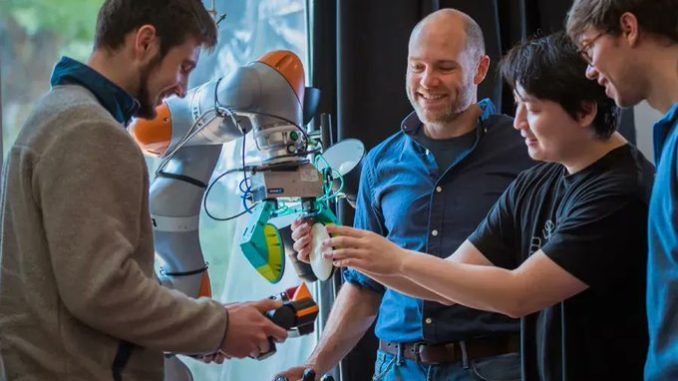
A new robotic manipulation course provides a broad survey of state-of-the-art robotics, equipping students to identify and solve the field’s biggest problems.
As robots evolve, society’s collective imagination forever ponders what else robots can do, with recent fascinations coming to life as self-driving cars or robots that can walk and interact with objects as humans do.
These sophisticated systems are powered by advances in deep learning that triggered breakthroughs in robotic perception, so that robots today have greater potential for better decision-making and improved functioning in real-world environments. But tomorrow’s roboticists need to understand how to combine deep learning with dynamics, controls, and long-term planning. To keep this momentum in robotic manipulation going forward, engineers today must learn to hover above the whole field, connecting an increasingly diverse set of ideas with an interdisciplinary focus needed to design increasingly complex robotic systems.
Last fall, MIT’s Department of Electrical Engineering and Computer Science launched a new course, 6.800 (Robotic Manipulation) to help engineering students broadly survey the latest advancements in robotics while troubleshooting real industry problems. It’s a unique course that can provide an inroad into robotics for students with no robotics experience at all, designed by Russ Tedrake, the Toyota Professor of Electrical Engineering and Computer Science, Aeronautics and Astronautics, and Mechanical Engineering at MIT. Tedrake developed the course after robotic manipulation became the new focus of his own research at the Toyota Research Institute and MIT’s Robot Locomotion Group, and it became apparent to him that developing a pedagogical framework would be important because the field is so diverse and changing so rapidly.
